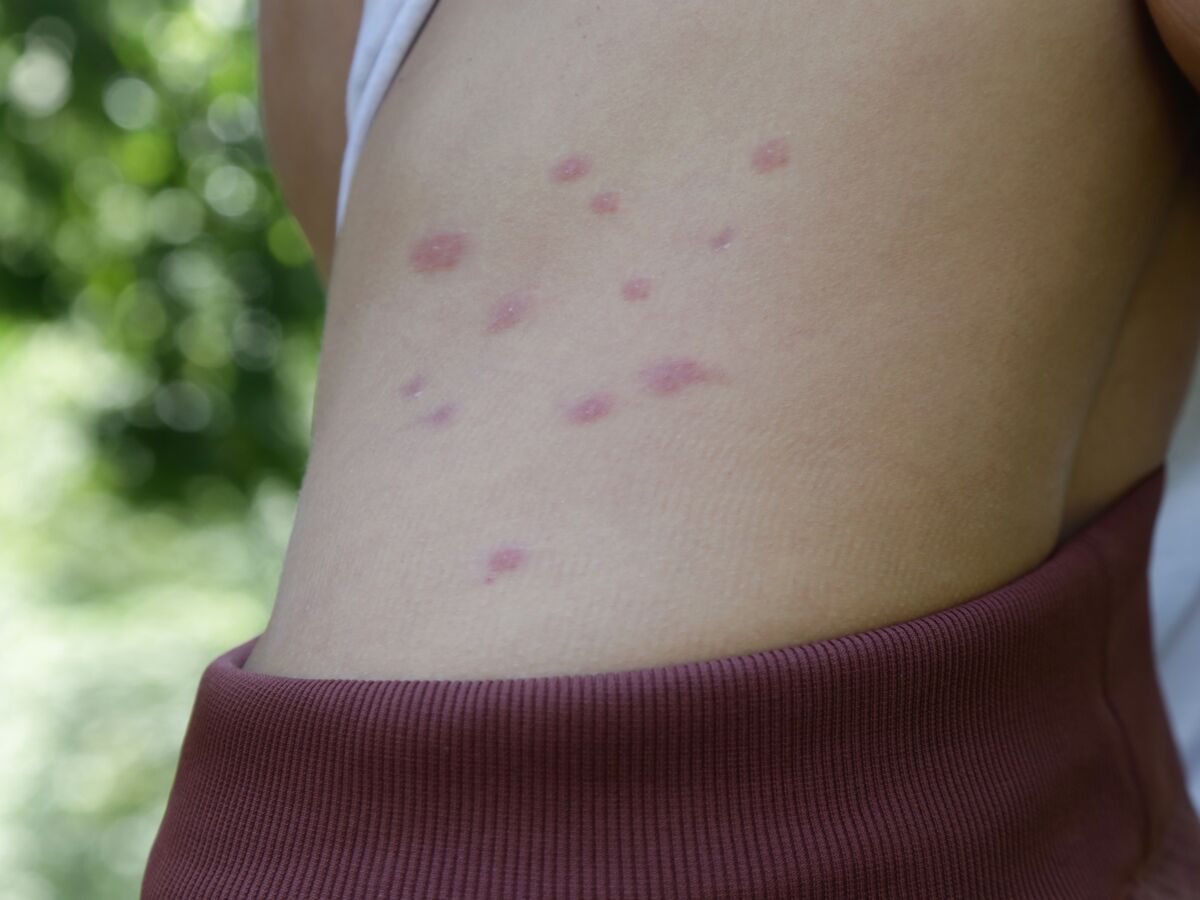Horseflies, ticks, spiders… Many insects can bite us, all over the world. Among them, we also find bedbugs. These undesirables are the size of an apple seed and have an oval body. They are flat and do not have wings. Unlike mosquitoes, bedbugs pose no risk of transmitting infectious agents, such as viruses or bacteria, according to theHealth Insurance.
These brown colored pests primarily feed on human blood at night and turn a red tint after feeding. They flee light and can sting several times during the night. To attack their prey, these parasites hide in dark, quiet places and near their victims, such as mattresses, box springs, duvets or sofas. They can also be found on clothing or in suitcases.
How to recognize a bedbug bite?
According to Health Insurance, bedbug bites appear as skin lesions and leave red marks grouped in rows on the skin. A red dot or blister of clear fluid appears in the center of these bites. These lesions can be located all over the body but particularly on areas of the body not covered during the night, such as the arms, legs, back or neck.
These bites are generally painless when the insect bites its victim. However, they cause itching one or two hours later. Itching is more marked in the morning than in the evening. The skin reaction to these lesions depends on the sensitivity of each person. As proof: some individuals may not realize that they have been bitten.
What symptoms cause bed bug bites?
Bedbug bites cause several skin symptoms. “They are mainly known for the dermatological and allergic effects they cause, ranging from simple stings to generalized manifestations that can resemble hives. A person’s sensitivity can increase if the number of stings increases. In the event of a severe infestation, bed bugs can also be a source of various psychological disorders, and even anemia.indicates the government on its page dedicated to bedbugs.
Bedbugs: how long do they take to disappear?
According to Health Insurance, these bites disappear naturally after a few hours or ten days and do not require special care.
What to do in case of bedbug bites?
When you have been bitten by bedbugs, you should wash normally and avoid scratching as this could prolong the itching and lead to impetigo, i.e. a secondary infection. It is advisable to consult your doctor if the itching persists and if the bites cause an allergic reaction with urticaria-type lesions, namely bright red and painful blisters. The practitioner may prescribe the patient a cream to relieve these symptoms and an antihistamine.
Bedbugs: what signs indicate their presence in your home?
There are many signs that can help detect the presence of these pests. Skin lesions suggestive of bedbug bites can alert you. Small black stains, namely excrement, and streaks of blood on the bedding can also alert you. Another sign: live or dead bed bugs, eggs in the bed or bed bug skins.
Bedbugs: how to avoid an infestation?
Several precautions can be taken to avoid being contaminated by bedbugs. It is essential to carefully inspect and steam treat any object or furniture, such as a second-hand armchair, sofa or mattress, before installing it in your home. This also applies to clothes that must be washed at at least 60°C. If you move into a new apartment, you must make sure to check every corner of each room.
Bedbugs “only move by walking a distance of a few meters and are therefore most often transported from one place to another when moving an object in which they are staying”, specifies Health Insurance. The times that most favor contamination are therefore travel. To avoid bringing bedbugs home, you should always inspect the places where you stay and the bedding used. After your trip, it is essential to comb through your personal belongings.
Read also :
⋙ Bedbugs: 6 signs that should alert you to their presence
⋙ True/False: 10 misconceptions about bedbugs
⋙ Bedbugs: 5 tips from an expert to avoid scams
